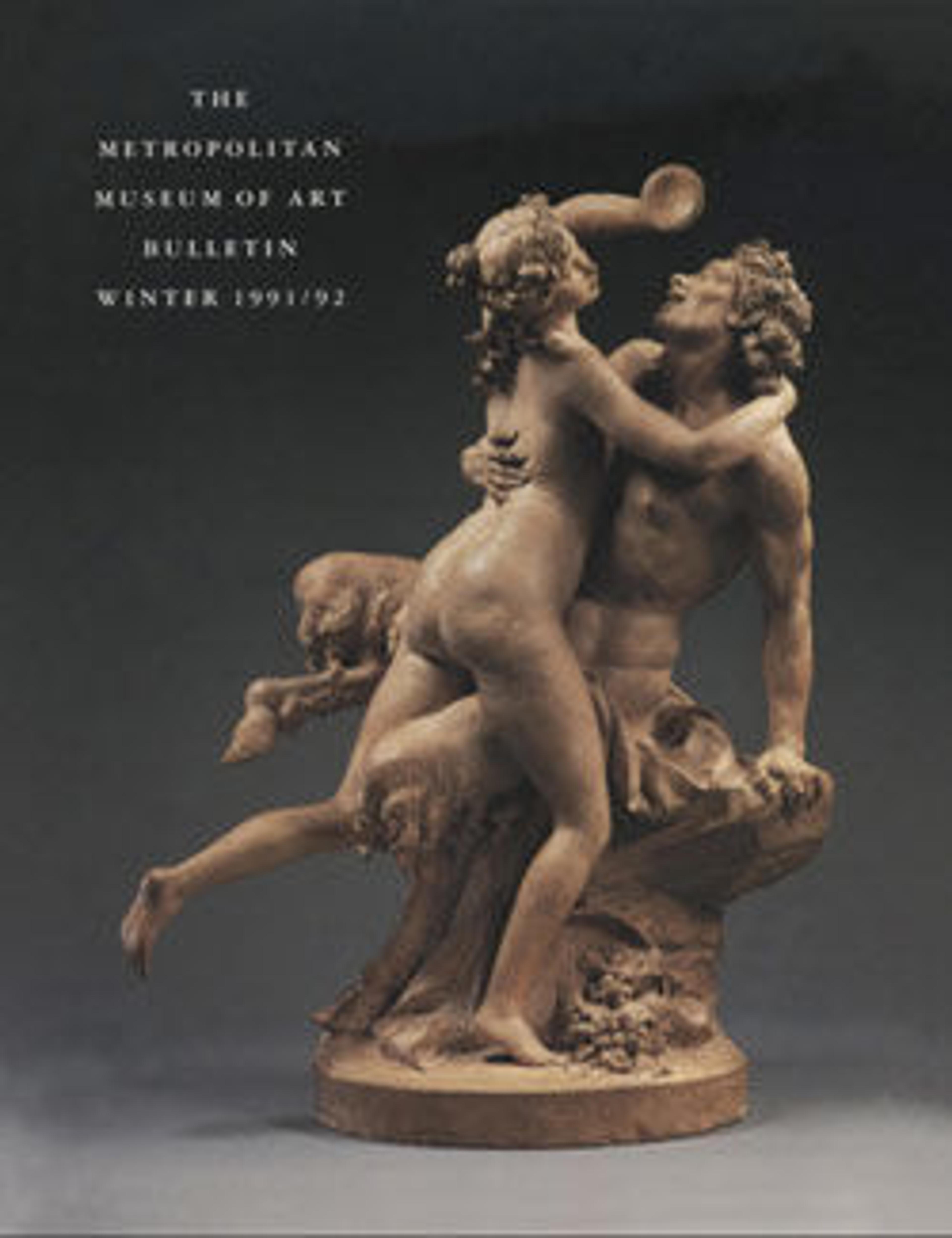Bacchante with lowered eyes
Commissioned by the architect Charles Garnier for the facade of the Paris Opéra, Carpeaux's monumental decorative sculpture La Danse was unveiled on July 26, 1869. The figural group, consisting of a slim central youth shaking a tambourine, with a putto at his feet and encircled by six joyously dancing bacchantes, quickly became the talk of Paris for its frank sensuality and unidealized female nudes. Nearly as shocking was the act of vandalism to which the sculpture was subjected when, during the night of August 27, 1869, a bottle of ink was hurled at it, staining the left front bacchante. Despite its controversial reception, La Danse (now in the Musée d'Orsay, Paris) is regarded by many as the artist's masterpiece.
Although unused in the end, this terracotta bust of a maiden with vine leaves twined in her hair was one of Carpeaux's studies for the final work. Carpeaux probably modeled this version with the intent of replicating it in an edition of cast terracottas.
Although unused in the end, this terracotta bust of a maiden with vine leaves twined in her hair was one of Carpeaux's studies for the final work. Carpeaux probably modeled this version with the intent of replicating it in an edition of cast terracottas.
Artwork Details
- Title: Bacchante with lowered eyes
- Artist: Jean-Baptiste Carpeaux (French, Valenciennes 1827–1875 Courbevoie)
- Date: 1872
- Culture: French, Paris
- Medium: Terracotta
- Dimensions: Overall (with base): 16 1/2 × 9 × 8 in. (41.9 × 22.9 × 20.3 cm);
Height (without base): 14 in. (35.6 cm) - Classification: Sculpture
- Credit Line: Rogers Fund, 1911
- Object Number: 11.10
- Curatorial Department: European Sculpture and Decorative Arts
More Artwork
Research Resources
The Met provides unparalleled resources for research and welcomes an international community of students and scholars. The Met's Open Access API is where creators and researchers can connect to the The Met collection. Open Access data and public domain images are available for unrestricted commercial and noncommercial use without permission or fee.
To request images under copyright and other restrictions, please use this Image Request form.
Feedback
We continue to research and examine historical and cultural context for objects in The Met collection. If you have comments or questions about this object record, please complete and submit this form. The Museum looks forward to receiving your comments.
